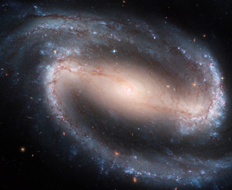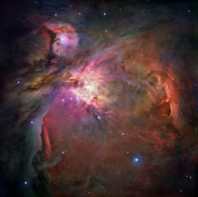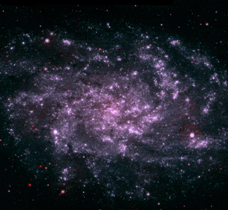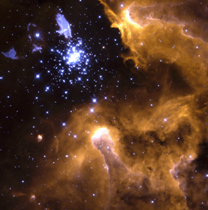- 1610: Galileo
- 1676: Ole Rømer
- 1687: Isaac Newton
- 1781: William Herschel
- 1838: Friedrich Bessel
- 1861: William and Margaret Huggins
- 1912: Henrietta Leavitt
- 1917 Einstein
- 1920: Harlow Shapley
- 1929 Edwin Hubble
- 1948: Ralph Alpher
- 1949: Fred Hoyle
- 1963: Maarten Schmidt
- 1964: Arno Penzias and Robert Wilson
- 1978: Vera Rubin and Kent Ford
- 1989: Margaret Geller and John Huchra
- 1992: John Mather and George Smoot
- 1995: Robert Williams
- 1998: Saul Perlmutter and Brian Schmidt
- 2010: Wendy Freedman
Nebulae
Since 1924, when Edwin Hubble announced that the Andromeda galaxy was not within our own Milky Way galaxy, astronomers began to separate the “nebulae” into two major groups. One group includes the galaxies like Andromeda that lie outside our Milky Way. There are many different shapes of galaxies, including spirals of various types, elliptical galaxies, and irregular galaxies. The other objects, that lie within the Milky Way are now the only objects called nebulae (singular: nebula). There are also many different types of nebulae, including the remnants of exploded stars, vast clouds of gas and dust, and star nurseries where new stars are forming out of clouds of gas and dust. Below are examples of two galaxies and two nebulae.
| Galaxies Outside the Milky Way | Nebulae in the Milky Way | |
 |
 |
|
| Barred Spiral Galaxy NGC 1300. Hubble Space Telescope. NASA. | Orion Nebula. Hubble Space Telescope. NASA | |
 |
 |
|
| Triangulum Galaxy M33. Swift satellite ultraviolet image. NASA. | NGC 3603 Star Forming Region. Hubble Space Telescope. NASA. |